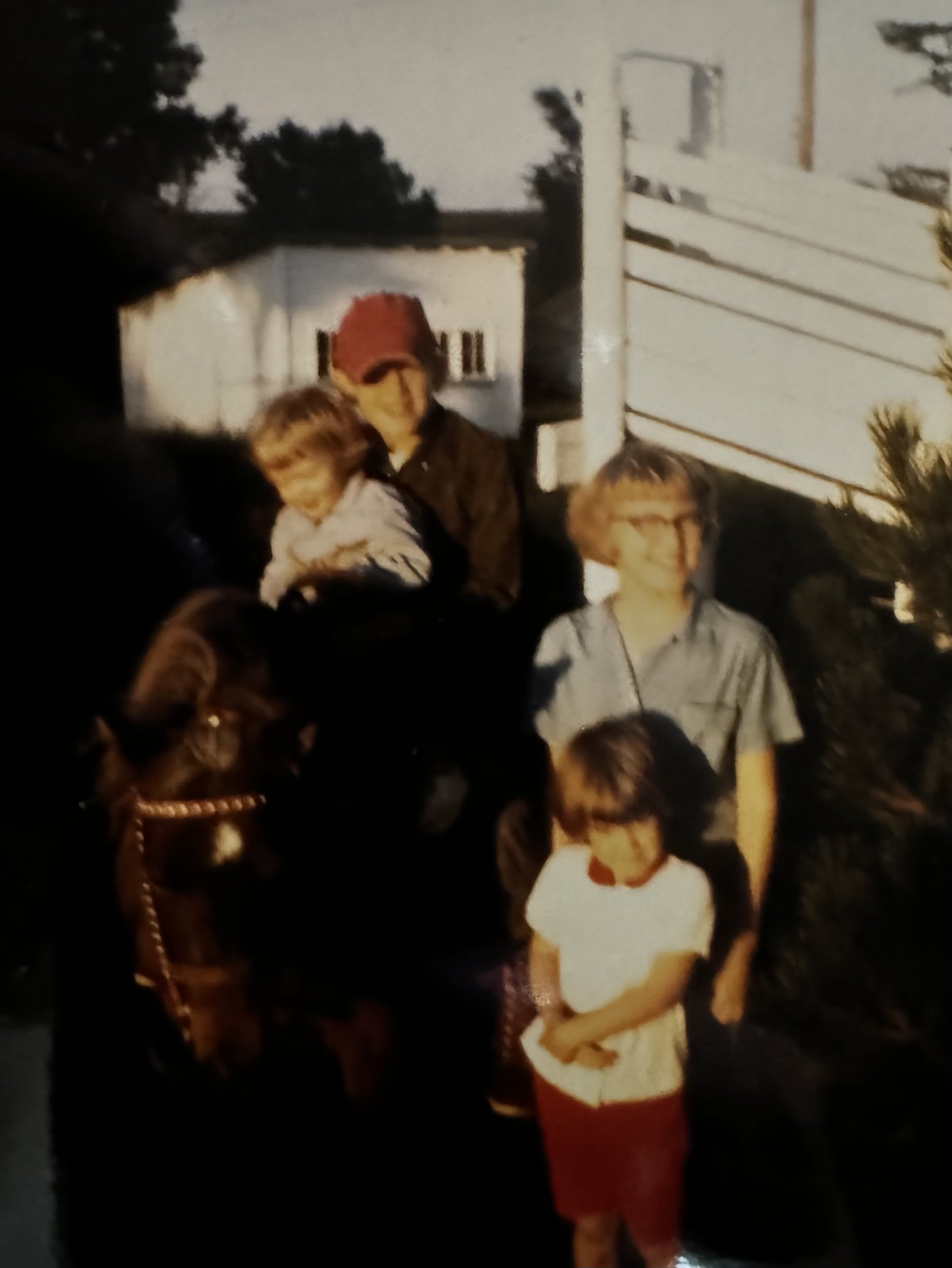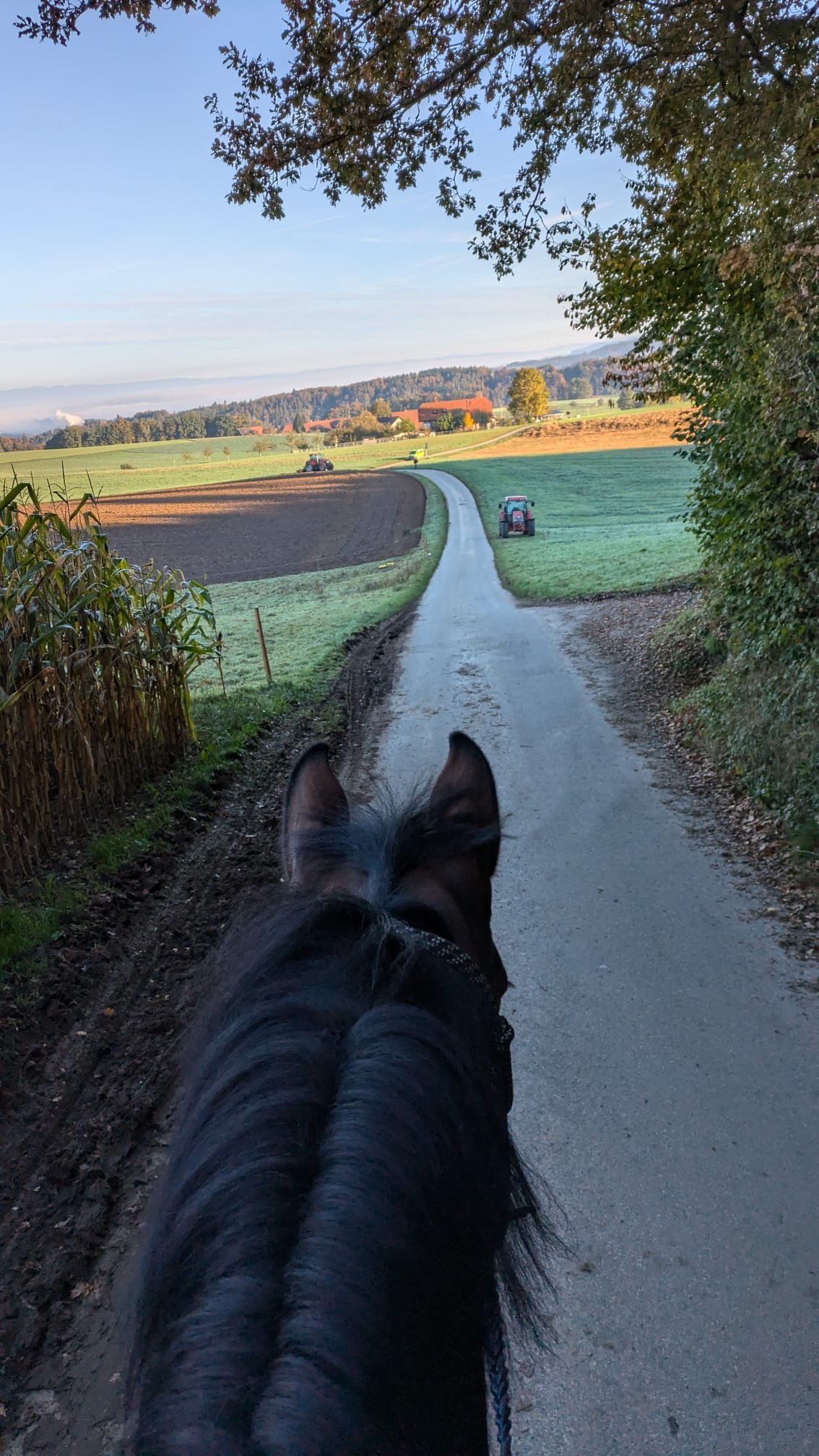A Tribute to the Farmer
Editors Letter - Let’s Harvest More Together
Life on the 80 Acre Farm in Burt County, my brother, Johnnie holding me on the horse, along with my sisters Cherie & Tammie. Guessing this to be about 1967.
As the golden hues of fall sweep across the Midwest, we're reminded that this is a time of harvest—a season where the year’s hard work comes to fruition. Yet, harvest isn't confined to one season or one region. All over the world, farmers are harvesting at different times, in different ways, throughout the year. And in our own lives, we too experience these seasons of growth, nurturing, and development.
At MYLO Brand Studio, we take a cue from the farmers. Just as they carefully plan, cultivate, and tend to their crops, we approach our work with the same care and intention. Whether it’s helping our clients develop marketing plans or creating meaningful projects, the key is to see the calendar as a whole and nurture each step along the way. With thoughtful planning and attention, the result is always something worth celebrating—a harvest that’s rich and rewarding.
This issue is a tribute to our farmers—their diligence, dedication, and love for the land inspire us all. But it’s also a call to all of us to reflect on the harvests in our own lives. Let’s cultivate our ideas, nurture our projects, and grow together into something beautiful.
Middle America ripping the fields, oooh
Angie H.
Life of the Farmer
A view from our friend Maya riding horseback near her home in Bern, Switzerland as she approaches farmers at work.
Growing up on the Dirt
There’s a rhythm to farming, a cadence set by the seasons, weather, and the quiet hum of a tractor moving across a field. It’s a rhythm that becomes part of you, one that resonates long after you’ve left the farm, reminding you that life—like farming—takes planning, patience, and relentless care. I was raised on an 80-acre farm, surrounded by livestock, crops, and the steady hands of my family working the land. It wasn’t always easy, but the beauty in the labor was undeniable. The potatoes my grandfather grew and the sweetcorn we harvested together found their way to our supper table, a testament to the care and love that went into each seed planted.Farming is not just an occupation—it’s a calling. It requires knowledge, a connection to the earth, and a commitment to the future. The men and women who dedicate their lives to this work do so with the understanding that what they sow today will sustain generations to come. They nurture the land and raise animals with a deep sense of responsibility, not just for their families but for the world. They face challenges—droughts, storms, floods—yet they persist, understanding that every season brings its own set of trials and triumphs.
Across the United States, farmers are sowing fields of wheat, corn, soybeans, and rice. They’re raising cattle, sheep, and hogs, and they’re ensuring that food makes it from their fields to our tables. From Nebraska’s cornfields to Florida’s orange groves, their reach is vast, and their impact is immeasurable. The crops they tend, the animals they raise—these are the lifeblood of our global community. But the process is often unseen and underappreciated. The care that goes into growing our food, from site preparation to harvest, is a marvel of human dedication and ingenuity.
As a child, I witnessed firsthand the devotion that comes with farming. While our farm may not have been expansive, it was rich in the values and lessons that come from working the land. My mother tended to a massive garden, with rows upon rows of beans, peas, lettuce, and tomatoes. Strawberries grew in abundance, and we would harvest them together, our hands stained red from the juices. I remember the pride my grandfather took in the garden. He loved helping my mother tend to it, nurturing the soil as though it were part of the family itself. Together, we harvested, tasted, and preserved the fruits of our labor. And on those days when the chickens were ready for the table, I can still smell the fried chicken my grandmother would cook right there in the garage—a taste I’ll never forget.
It wasn’t just about the work; it was about understanding the cycles of life. We learned early on that what we put into the land is what we’d get out of it, whether it was a fresh ear of corn or a full basket of tomatoes. And in that, there’s a profound lesson about life itself. Farming taught me that care, patience, and love produce rewards—both on the farm and in life.
The Best Plans cultivate the Best Results…
Growing up on the farm, my siblings and I learned these lessons firsthand. We walked beans, detasseled corn, and helped raise chickens, cattle, sheep and hogs. We fixed fences, repaired gates, and spent countless hours tending to the land and the animals. These experiences shaped who we are today. My grandfather and parent’s love for the soil, the animals and the harvest left an indelible mark on my heart. And it’s these same values that have been passed down to future generations, like my niece Jennie’s daughter, Beckett, who now gazes out from the combine, a reminder that the farmer’s legacy continues.
Farming today has evolved in remarkable ways. Modern agriculture is a finely tuned balance of science, technology, and tradition. The small family farms of yesterday have transformed into highly productive, resource-efficient operations. Farmers now rely on a host of tools—some familiar, some completely new—to meet the demands of a growing global population while managing the challenges of climate change, market fluctuations, and limited resources.
Today’s farmer must contend with the unpredictability of the environment. Natural forces that have always been part of farming—are intensifying. As a result, irrigation systems have become critical. Advanced systems use technology to ensure that water is delivered exactly where it’s needed, reducing waste and conserving this precious resource. In fact, the irrigation industry has grown significantly in response to these environmental challenges, and farmers are investing heavily in systems that allow them to survive in increasingly difficult climates.
The technological transformation doesn’t stop there. GPS-guided tractors and drones now help farmers plant, monitor, and harvest crops with precision. Sensors in the soil measure moisture levels, sending real-time data to farmers to optimize watering schedules. Automated systems manage planting and fertilization with pinpoint accuracy, reducing waste and maximizing yields. Even the way farmers manage pests and weeds has become more sustainable, with integrated pest management practices minimizing chemical use.
It’s not just about feeding the people of today—it's about ensuring the sustainability of the earth for generations to come.
Farmers must carefully manage their soil, preventing erosion and depletion through crop rotation and the use of cover crops. Animal farmers focus on sustainable grazing practices, ensuring the land can continue to support livestock while reducing the environmental impact.
Feeding the World
Livestock farming has also changed drastically. Farmers who raise cattle, hogs, sheep, or poultry now use sophisticated management practices to ensure both humane treatment and efficient production. From selective breeding to climate-controlled environments, farmers have innovated ways to increase efficiency while caring for their animals. In fact, many livestock operations are now integrating sustainable practices, such as recycling animal waste as fertilizer or using byproducts from the food industry to feed their livestock.
But behind all the advances and modernization, farming remains, at its heart, a labor of love. The connection between farmer and land, between farmer and animal, is something that can’t be replicated by machines. There’s still a human element to farming that can never be replaced—one of care, diligence, and passion for the work. The farmer’s daily effort is what brings food to our tables, what fuels our communities, and what ensures our future. Farming may look different today, but its essence remains timeless. It’s a story of hard work, family, resilience, and love—a story that connects us all. So as you sit down to your next meal, take a moment to appreciate the journey that your food has taken, the hands that nurtured it, and the farmers who—across generations—have made it all possible. This is for them, the steadfast guardians of the land, whose legacy lives on with every harvest, every meal, and every seed sown for the future.
See the Beauty from the Farmer’s Lens
As we reflect on the work of farmers, there’s a profound lesson in gratitude and perspective. In a world that often feels fast-paced and filled with noise, it’s time to slow down, look deeper, and appreciate the beauty of what we reap from the land and the people who make it happen. The farmer’s view is one of quiet patience and reverence for the earth—a lens through which we can all learn to see differently.
Our world could benefit from silencing the voices of hate and violence, instead choosing to cultivate joy and gratitude for this remarkable universe we live in. Farmers understand this; they know that nurturing the land leads to growth, just as tending to our communities and relationships brings about true harvests of happiness and peace.
So let us pause, take in the landscape of our lives, and honor those who work tirelessly to bring us what we often take for granted. It’s time to plant seeds of kindness, harvest joy, and appreciate the simple, beautiful moments that sustain us all.






